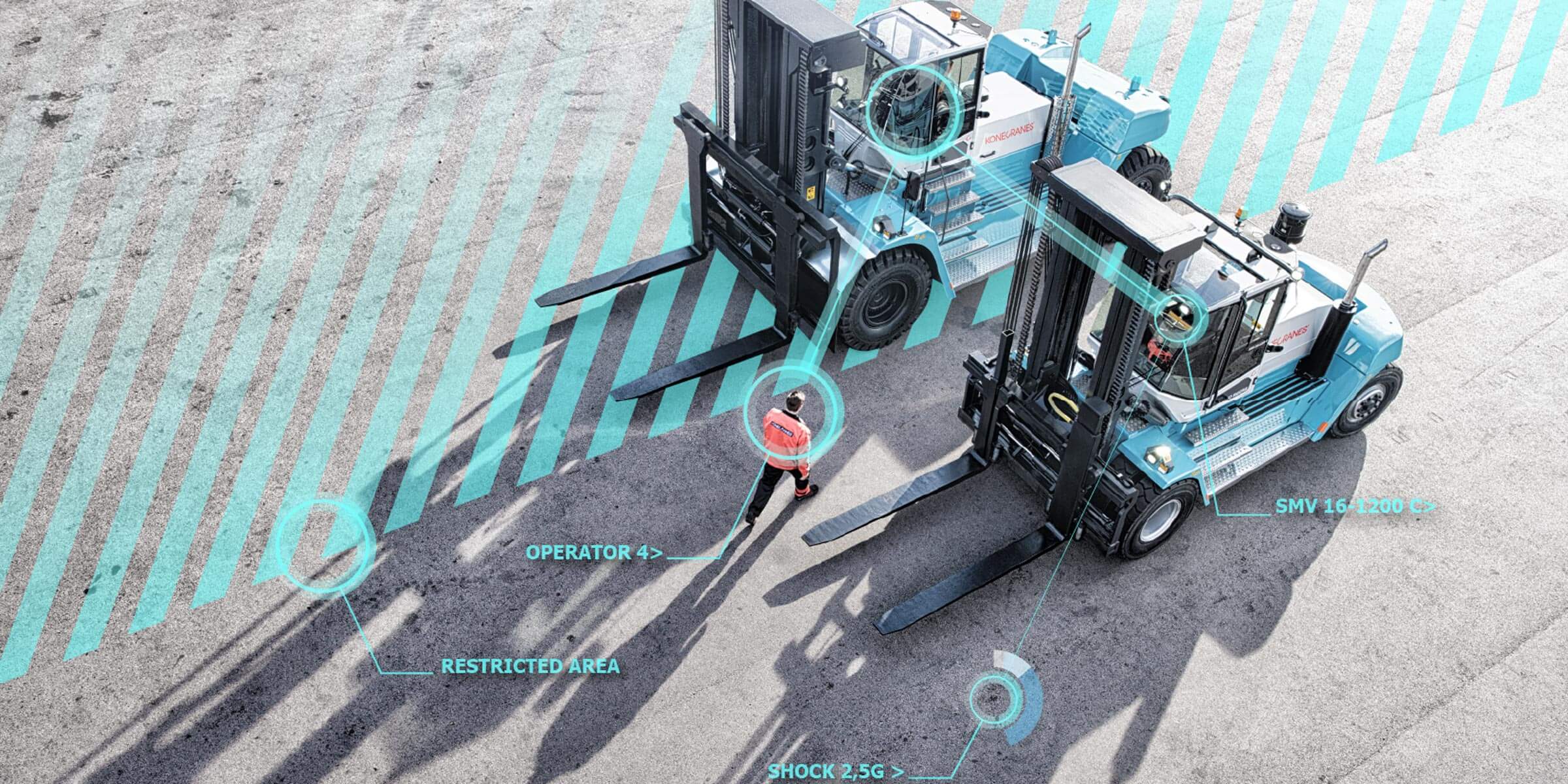We use cookies to personalise content & improve our services. By using our site, you consent to our Cookie Policy. Read more
Konecranes and Telia developing the port of tomorrow using 5G technology


A modern port is a key node in a precision-tuned logistics chain. In addition to efficiency, the most important goal of the operations at a port is security, which is now being improved with 5G technology and analytics. Konecranes’ and Telia’s joint effort will develop solutions for the automated port operations of tomorrow.
Amid stacks of shipping containers, cars, forklift trucks, workers and heavy container lifts are moving around the area. The Telia and Konecranes joint effort harnesses 360° video image, the 5G network and video analytics to monitor the environment of the machines operating in the container yard. A 5G lift automatically recognises the surrounding elements, such as people, vehicles and obstacles.
The pilot project was launched to develop the port of tomorrow, where autonomously operating vehicles and transport machines reliably, safely and efficiently handle the logistics that we all need every day.
“With Konecranes, we reviewed how we could utilise the opportunities of 5G and data analytics as part of their innovation efforts. We opted for a video analytics project that would be implemented with a broad base of partners. At this stage, it has been tested in a shipping container port environment”, says Telia project manager Markus Heikkilä.
“A port with shipping containers is a busy place with plenty of action. It is also a place where an accident may result in very expensive or fatal consequences. What if we could link mobile machines to automatic video monitoring? Telia had already implemented a service based on video analytics at an industrial plant, and therefore we quickly received a positive answer from them on the question”, comments Product Portfolio Manager Sami Piittisjärvi from Konecranes Port Service, as he explains the moments of birth of the project.
Konecranes develops its products with rapid innovation cycles. “The goal with developing and testing the concepts is to find new solutions for our products, which we can then incorporate into the solutions that we offer to our customers”, he summarises.
A forklift truck will see the obstacles that go unnoticed by the driver –
5G can improve the security of the port in a variety of ways
In the pilot, a forklift truck was equipped with a 360° video camera that relays image over a 5G network for the video analysis engine to analyse. The low latency and massive capacity of the 5G technologies enable the system to transfer high-resolution video image from a mobile machine to the cloud service. Thanks to the real-time implementation, the forklift truck itself will see the obstacles that the driver misses.
“The experiment was carried out on Konecranes’ Hyvinkää container yard, but we are investigating the concept with the possibility of using it with all machines and devices used at ports. The efficiency and security benefits of the video analytics service appear very promising, and the results are encouraging us to continue the development for future customer solutions”, Mr Piittisjärvi from Konecranes says.
The project is an excellent example of how new technologies can be combined, involving many specialists. Telia brings in the 5G network, devices and data routing. FinCloud Oy’s camera and streaming application produce the video feed for Insta Digital Oy’s video analysis engine, which is run in a cloud service managed by Telia Inmics-Nebula.
The successful pilot signposts the way forward to a future where the safety of autonomously operating machines is ensured with real-time video analytics. In that setting, the safety-ensuring data can be transferred in a 5G network provided by Telia to the port, or the information can be sent over a hybrid environment where edge computing and cloud services are integrated into a seamlessly operating whole.
“We have merely taken a peek at the future possibilities of 5G. With each project like this, it feels like our wildest visions are reality, just waiting for someone to do the work,” Piittisjärvi concludes.
Writer: Timo Saxén